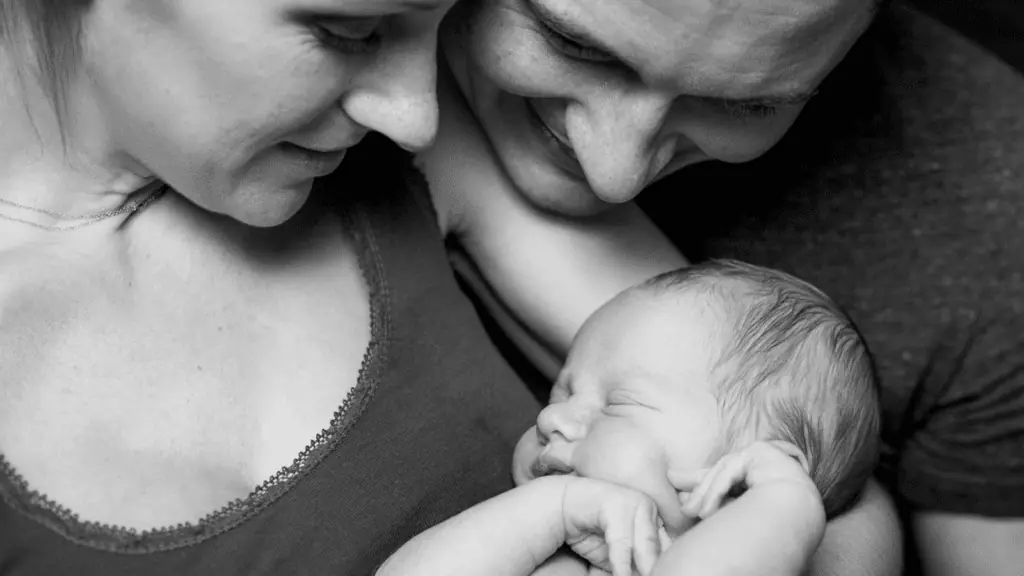Spotting While Breastfeeding: Is It Normal?
This post may contain affiliate links. As an Amazon Associate, I earn from qualifying purchases.
When you begin your breastfeeding journey, you may encounter a variety of physical changes in your body. One such occurrence that can cause concern and raise numerous questions is spotting while breastfeeding. However, this phenomenon is typical for most women and is often nothing to worry about.
In this article, we will explore the topic of spotting during breastfeeding, address your concerns, discuss when to seek medical attention, and provide clarity to ease any worries or confusion about this postpartum experience.
I experienced it too…..
Breastfeeding my second son was a breeze compared to my first. I did not experience sore nipples, breast engorgement, or the like because I was armed with more breastfeeding knowledge than when I gave birth to my first son. I was unprepared for what was to come later.
I encountered a rather unexpected and unsettling occurrence that did not happen with my first son. I noticed some faint traces of blood on my underwear 12 weeks after giving birth. Even as a doctor, I could not help but feel a wave of concern wash over me. This was not the regular lochia discharge women experience just after childbirth. What could be causing this? Was it my menstrual cycle returning so soon? Why was I having a period while exclusively breastfeeding?
Searching for answers, I began reading medical journals for insight into my predicament. One study I came across reported that it was normal for women who were breastfeeding exclusively to experience some bleeding between 6 and 8 weeks postpartum.
Despite finding comfort in these medical journals, I remained curious about the reasons behind this unexpected symptom. For instance, research shows that changes in one’s hormone levels associated with feeding a baby exclusively with breast milk could affect the delicate balance of reproductive hormones. The sudden drop in estrogen levels can lead to changes in the uterine lining, resulting in spotting or light bleeding.
I decided to consult my doctor to ensure there were no underlying concerns. She reassured me that I was perfectly safe and that the vaginal spotting I noticed was generally harmless. She explained that as long as the bleeding was light, intermittent, and not accompanied by severe pain or other alarming symptoms, it was likely a normal postpartum recovery process. And most importantly, spotting will not affect my milk supply.
With my worries put to rest, I continued exclusively breastfeeding my baby, appreciating the incredible bond it created with him. Though the occasional vaginal spotting remained, it no longer caused unnecessary anxiety.
Related read: Best Recliners for Nursing Moms
What is spotting while breastfeeding?

Spotting refers to light, intermittent bleeding you may experience while breastfeeding your baby. It is characterized by small amounts of blood, usually appearing as pinkish or brownish stains on underwear or when wiping after urination. Spotting is different from a regular menstrual period, as it is typically lighter in flow, shorter in duration, and happens after the sixth week during the postpartum period.
Women often worry when they experience this, but it is usually harmless. Spotting and having irregular periods are pretty normal while breastfeeding. It can be attributed to changes in the hormone levels that accompany breastfeeding. It is certainly not an indication to stop breastfeeding your baby.
While spotting is generally not a cause for concern, it is necessary to differentiate it from postpartum bleeding.
Related read: Best Probiotics for Nursing Moms
Differentiating between postpartum bleeding and spotting?
After giving birth, it is common for you to experience postpartum bleeding for up to six weeks, also called lochia discharge. This is a mixture of blood, cervical mucus, and tissue from the lining of your uterus. It starts as bright red bleeding, can be very heavy, and may contain blood clots. After a few days, the bleeding will slow down and turn pink or lighter in color.
This is a way for your body to shed the uterine lining and excess blood from birth. Typically, bleeding lasts for the first few weeks, gradually tapering off in the coming months postpartum. It is different from spotting.
If the bleeding becomes more, resembles a heavy period, or is accompanied by severe pain, foul odor, or other concerning symptoms, it is advisable to seek medical advice to rule out any underlying issues.
What causes spotting while breastfeeding?
Spotting during the breastfeeding period could be attributed to several factors related to hormone fluctuations and physiological processes in your body. While spotting is commonplace, other factors or underlying conditions can cause abnormal bleeding. These may include infections, uterine abnormalities, hormonal imbalances, or certain medications.
The primary causes of breastfeeding-induced spotting include:
Hormone changes
Hormonal fluctuations in your body can cause spotting or irregular periods while breastfeeding. The same hormones responsible for breast milk production, such as prolactin, can suppress the release of gonadotropin-releasing hormone (GnRH), which in turn affects the production of estrogen and progesterone. The drop in hormone levels can lead to changes in the uterine lining, resulting in spotting or light bleeding.
Postpartum recovery
Spotting can also occur as part of a normal postpartum healing process or signify the return of your period. After giving birth, your uterus undergoes involution (the uterus returns to its pre-pregnancy state). Small blood vessels may break during this process, causing slight bleeding or spotting.
Breastfeeding patterns
How often you breastfeed your baby can influence your hormone levels and cause light vaginal bleeding or spotting. Breastfeeding frequently, especially during the early months, increases prolactin levels, further suppressing the release of hormones that regulate your period. Also, introducing solid foods may influence spotting.
Infection
Infection in your reproductive system can cause vaginal spotting and needs immediate attention.
Related read: Best Breastfeeding Books
Signs and symptoms that may indicate a problem

While spotting during breastfeeding is generally harmless, specific signs and symptoms may indicate a potential problem:
Heavy bleeding
If the bleeding becomes heavy and you even pass blood clots, it may warrant medical attention.
Severe pain
If you experience intense abdominal pain or cramping accompanied by heavy bleeding could be a sign of an underlying issue and should be evaluated.
Foul-smelling discharge
Any unusual or foul-smelling discharge accompanied by bleeding should be brought to the attention of a healthcare provider.
Prolonged or persistent bleeding
If the spotting continues for an extended period or becomes more frequent, talk to your doctor.
Fever or signs of infection
If you experience fever or other signs of infection (extreme fatigue, lethargy, etc.), please consult your healthcare provider for a proper evaluation.
Related read: Best Water Bottles for Nursing Moms
Spotting while breastfeeding does not mean the return of your period or fertility
If you spot when breastfeeding your baby, it does not necessarily indicate a period return. Your first postpartum period can take six months to a year to return. While breastfeeding can suppress ovulation and delay the return of regular periods, it is not a foolproof method of contraception.
Some women may experience a delay before their period while breastfeeding and practicing on-demand feeding. This is known as lactational amenorrhea.
However, ovulation (the release of an egg) can occur before the period returns, even while breastfeeding. This means that pregnancy is possible, even if periods have not resumed.
Spotting can be influenced by fluctuating hormones and changes in the uterine lining. However, it does not necessarily indicate the return of regular menstrual cycles or fertility. Before you are ready to plan a new pregnancy, discuss reliable contraceptive methods with your healthcare provider.
RELATED READ: Breastfeeding as Birth Control: Does It Work?
How to manage spotting while breastfeeding

Spotting when you breastfeed your baby is nothing special. It is usually harmless, but you should know when to talk to your doctor. Resting, staying hydrated, and eating healthy, among others, can help manage vaginal spotting. With proper care and attention, you can enjoy the benefits of breastfeeding without any worries.
Rest
Resting and taking breaks between feedings can help reduce the chances of vaginal spotting due to hormonal changes and uterine contractions.
Maintain a healthy lifestyle
Eating a balanced diet, staying hydrated, and managing stress can help keep your body healthy and reduce the risk of infections that can cause vaginal spotting.
Practice good hygiene
Keep your vaginal area clean, and hold off on the tampons for now. You are better off using a pad to keep you comfortable and prevent irritation.
Speak with your healthcare provider
If you have concerns about spotting, you should talk to your doctor. They can assess you, review your medical history, and perform necessary tests to rule out underlying issues.
Related read: Best Nipple Cream for Breastfeeding Moms
Common concerns and frequently asked questions
Will spotting affect my breast milk supply?
Spotting should not affect your breast milk supply, as milk production is primarily driven by the hormone prolactin, while spotting is caused by changes in estrogen.
Can I get pregnant while spotting?
While less likely, ovulation is possible, and one can conceive while spotting. If you wish to prevent pregnancy, consider using contraception like birth control pills, an intrauterine device, or nonhormonal barrier methods or discussing natural family planning options with your healthcare provider.
How long does spotting last?
The time frame varies from one woman to the next. Some may experience it for a few weeks after giving birth, while others may have intermittent spotting throughout their breastfeeding journey till the first signs of a real period.

Conclusion: Key Takeaways
Throughout this blog post, we discussed if spotting while breastfeeding is normal. Here are the key points we covered:
- Spotting when you are breastfeeding is characterized by light vaginal bleeding, usually appearing as pinkish or brownish stains.
- It is a normal phenomenon you may experience due to hormonal fluctuations while breastfeeding your baby.
- Differentiating between normal spotting and abnormal bleeding involves considering factors such as flow, color, timing, and other concerning symptoms.
- While spotting is usually harmless, you should look out for signs like heavy bleeding, severe pain, or unusual discharge that may indicate a problem and should be evaluated.
If you have any doubts or worries about spotting, you should seek professional advice. Consulting with a healthcare professional will ensure you are properly evaluated and will guarantee your peace of mind.







